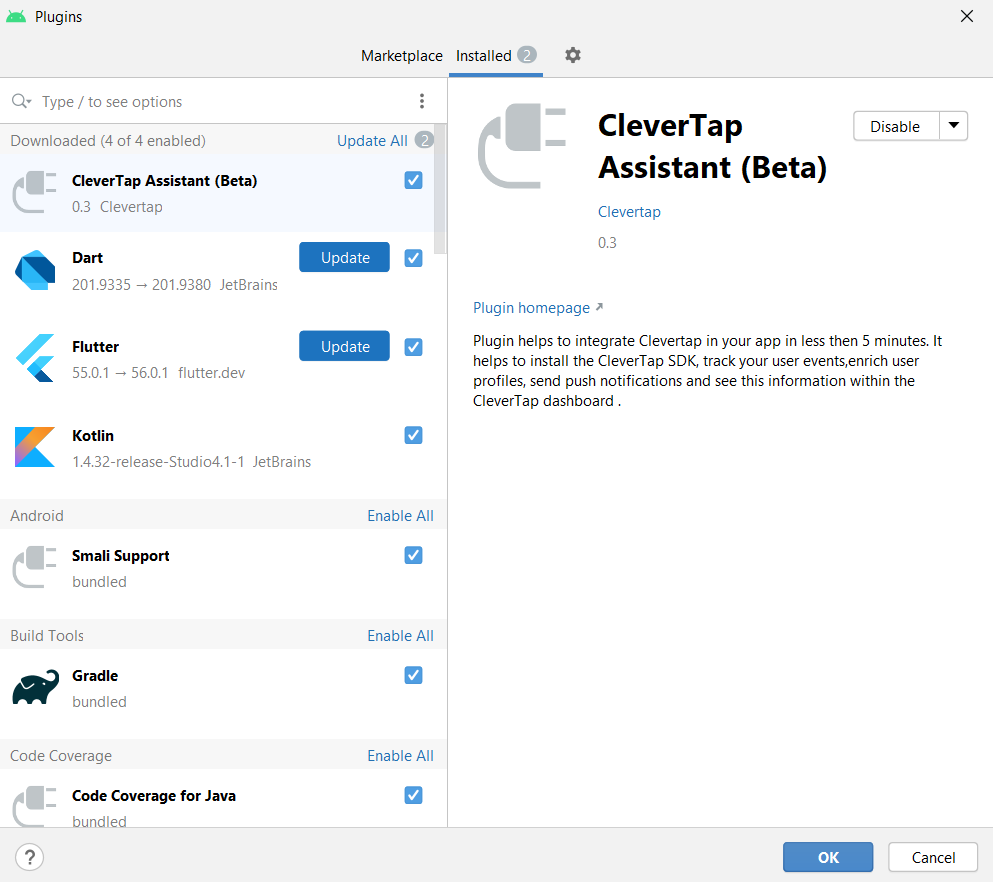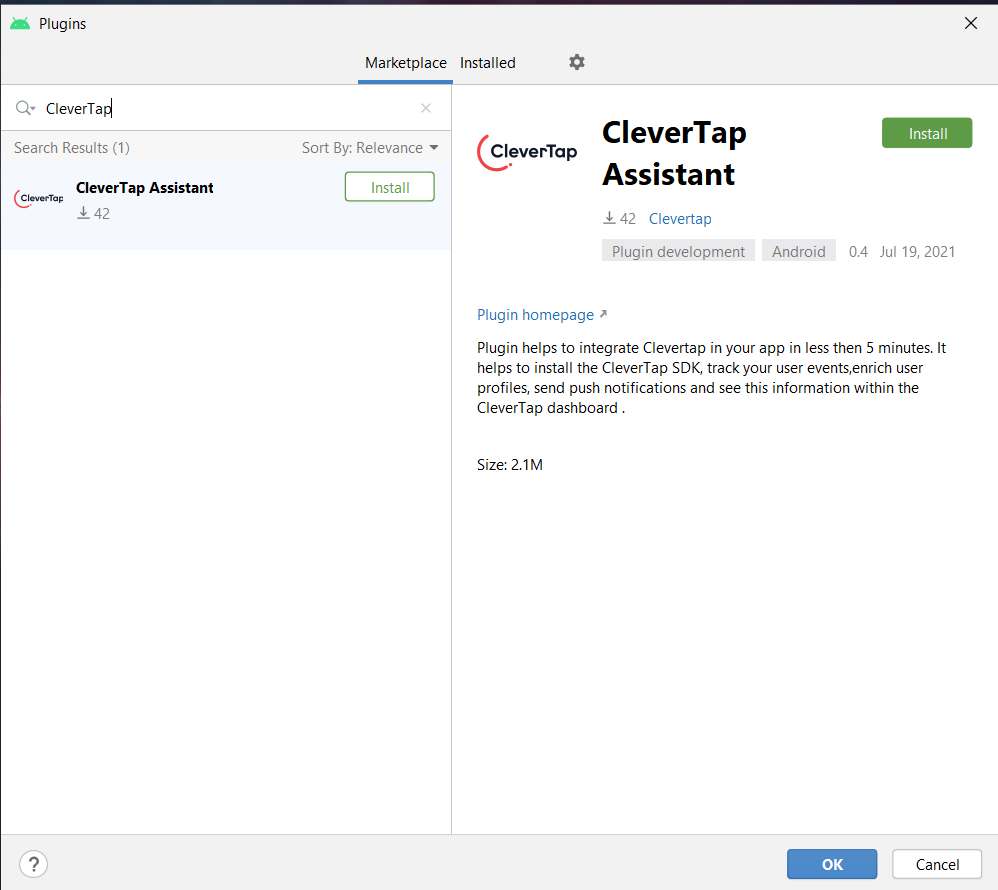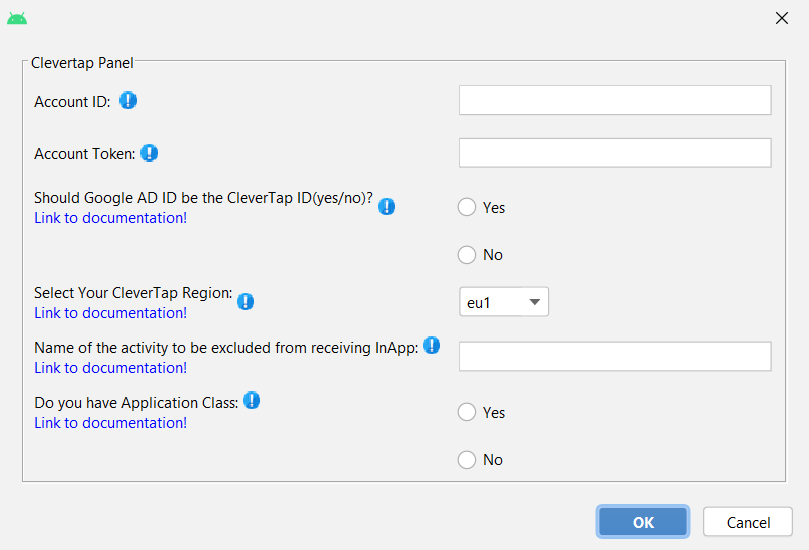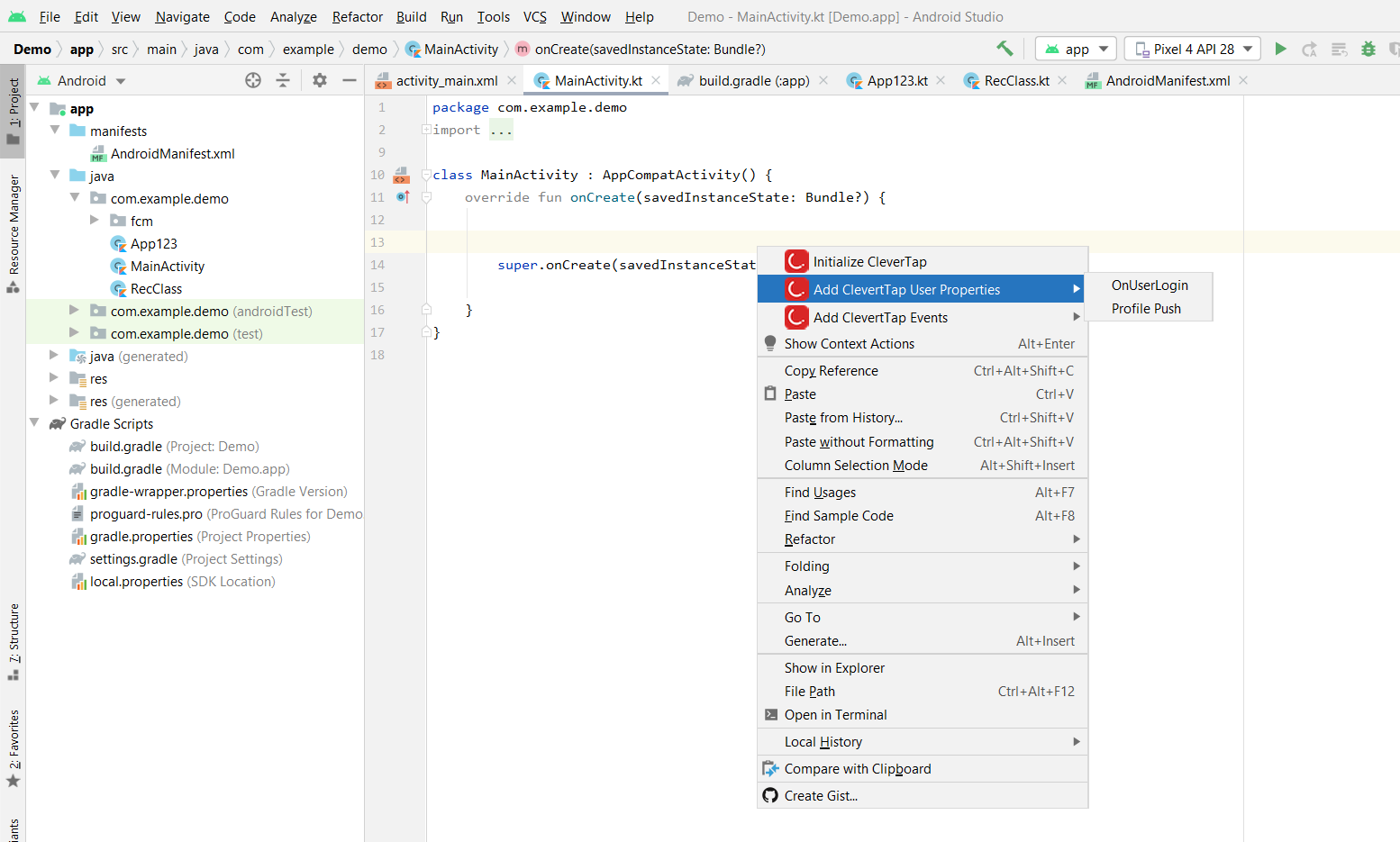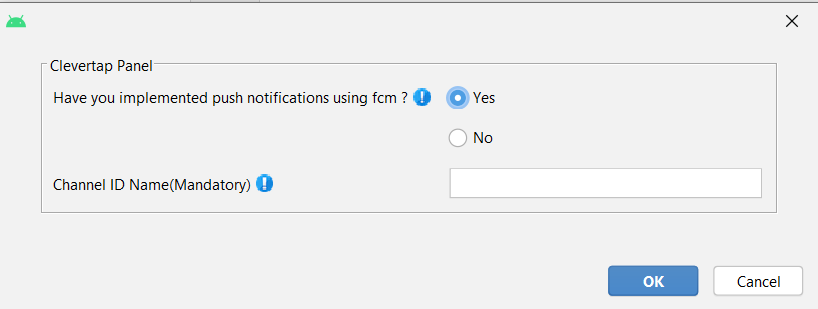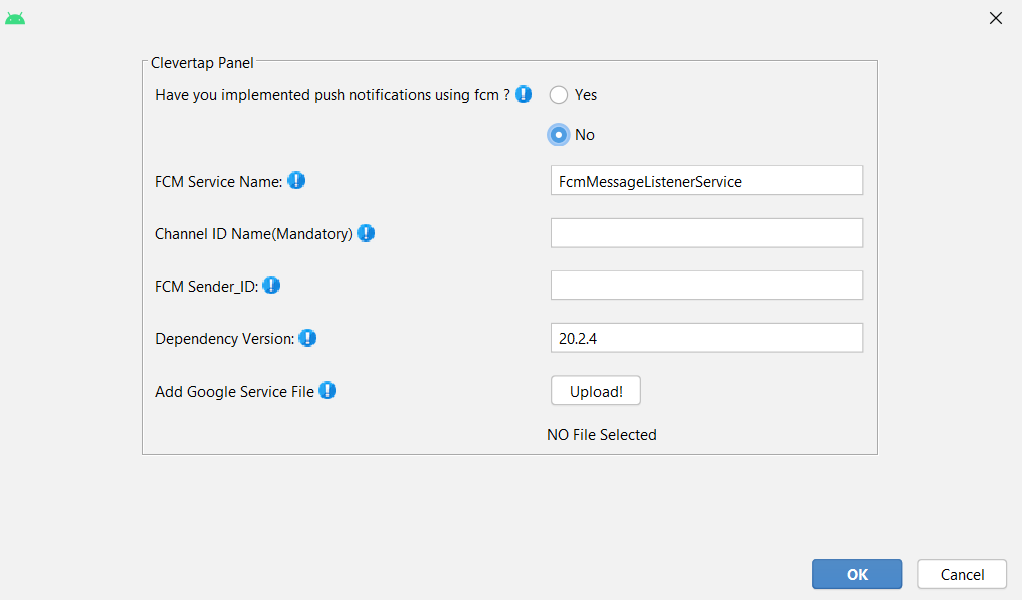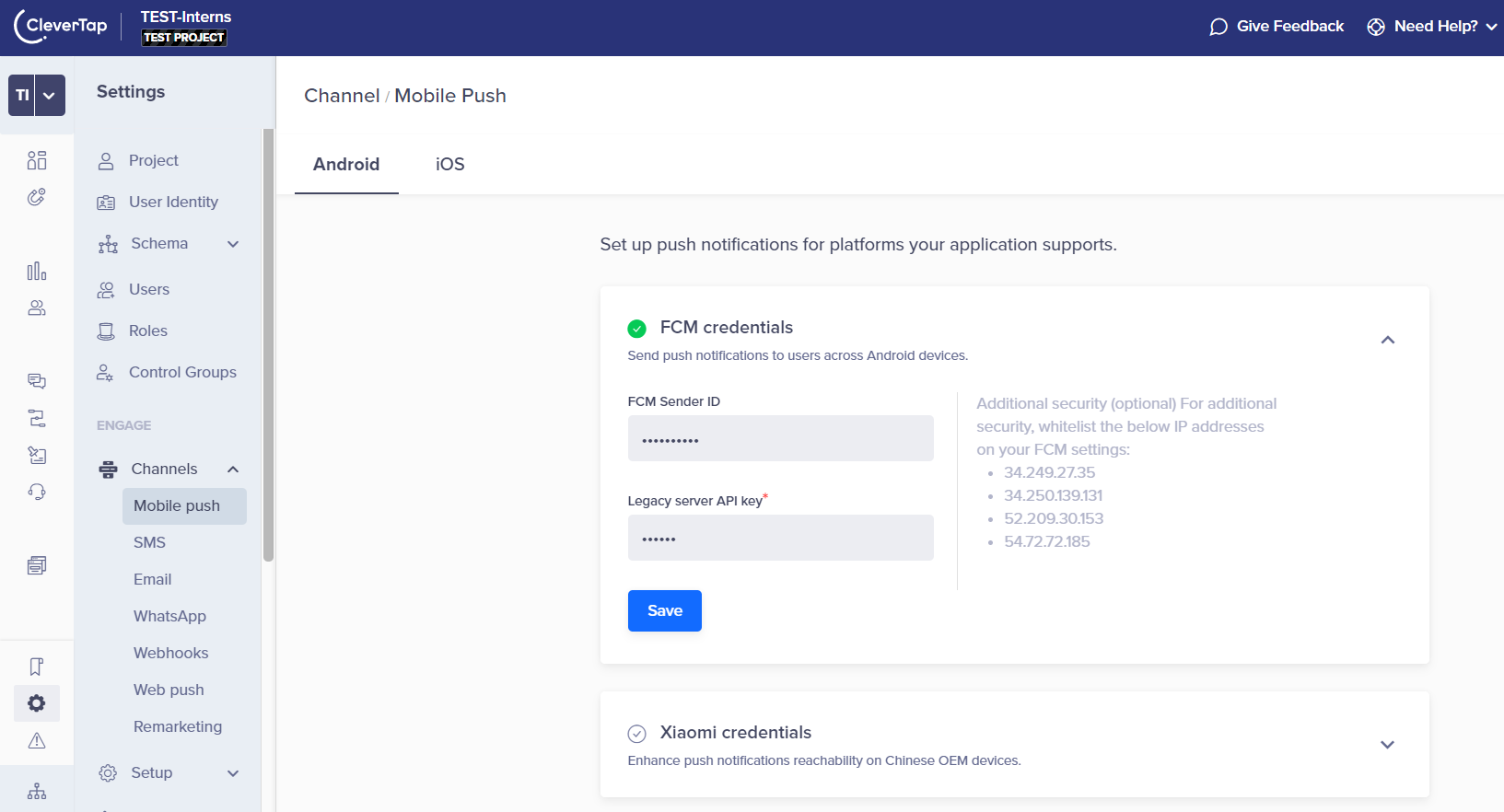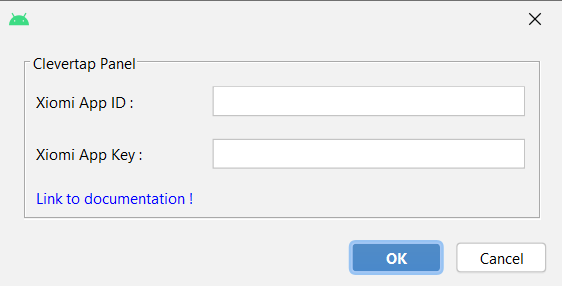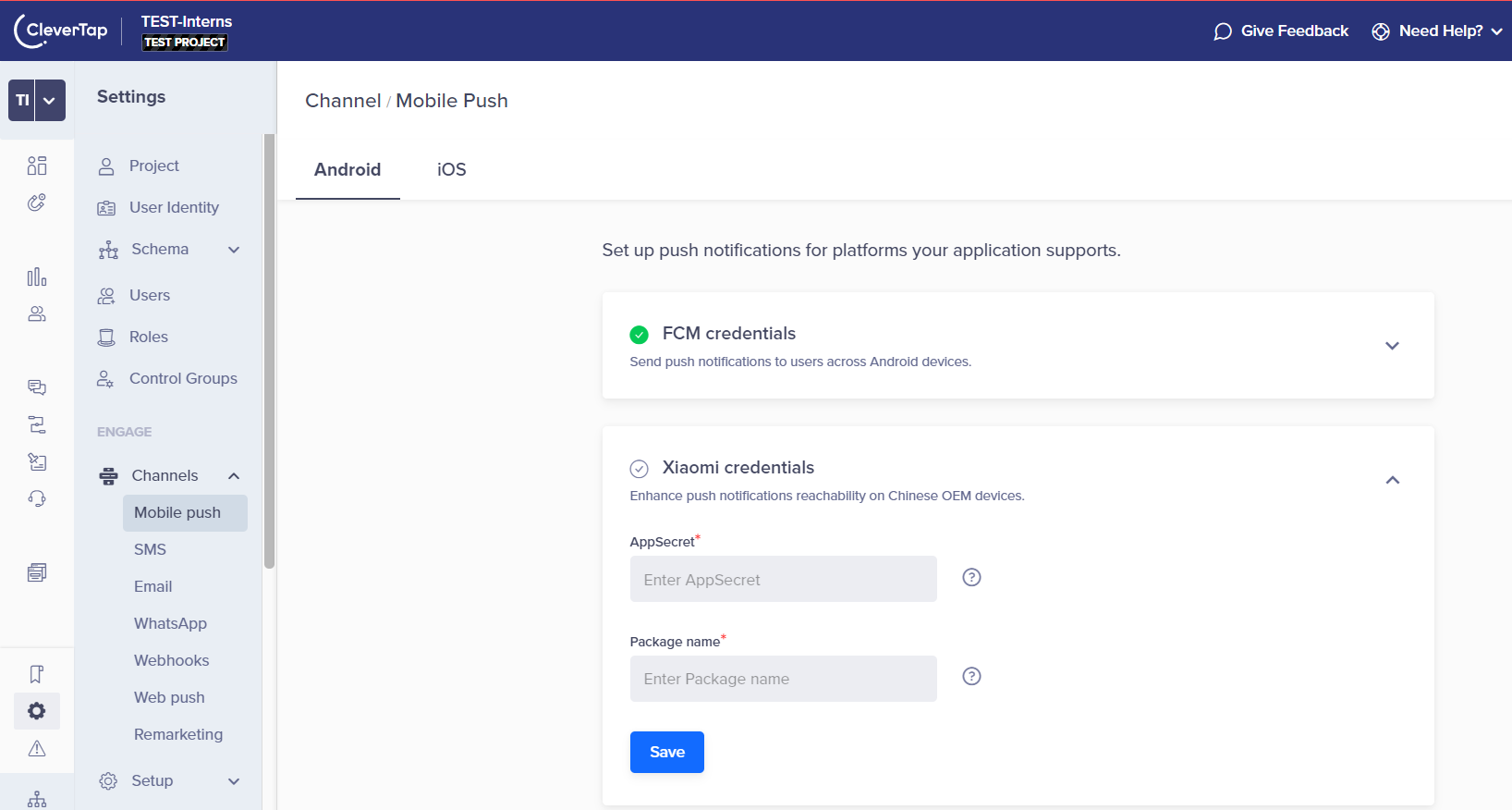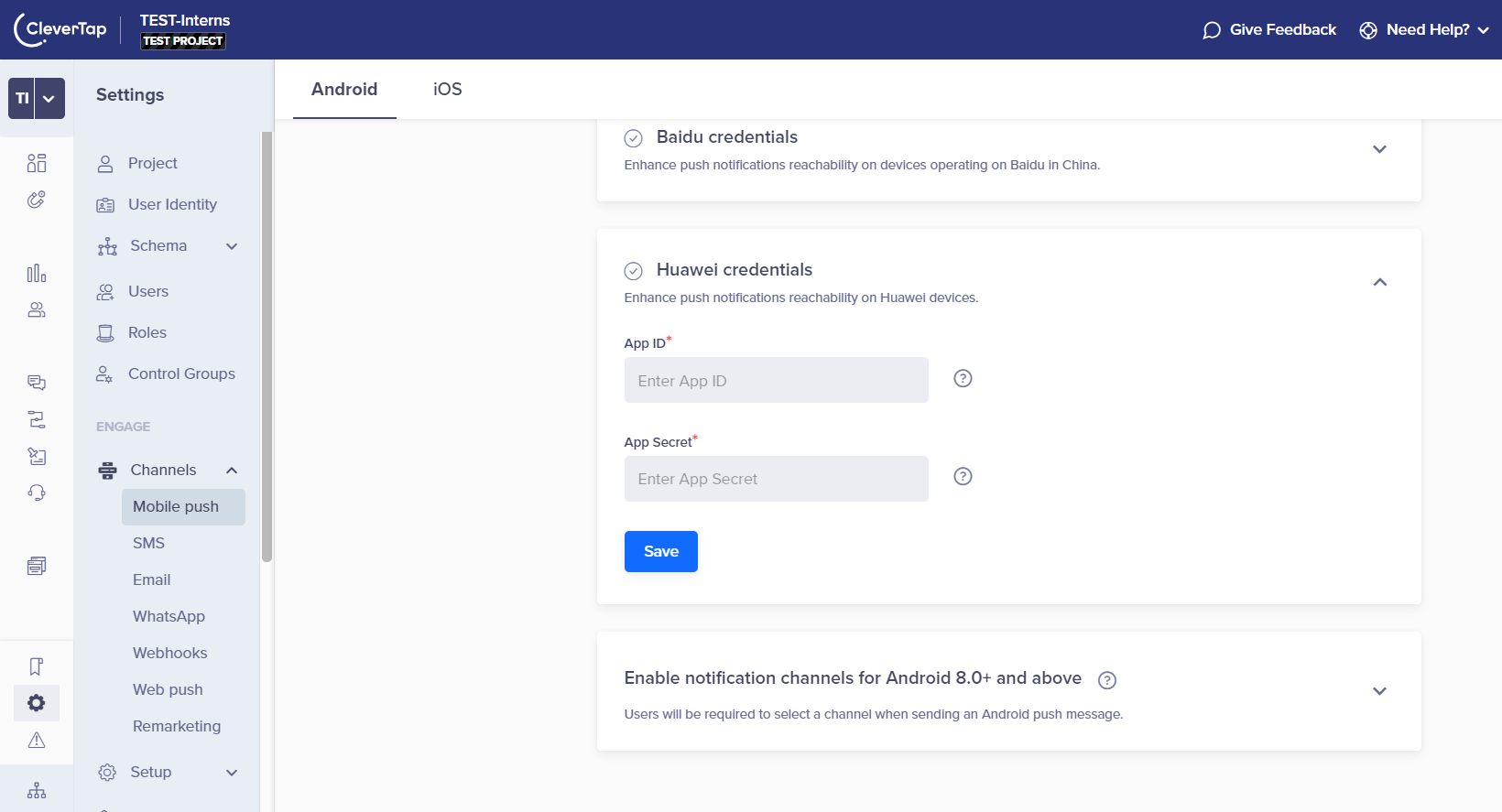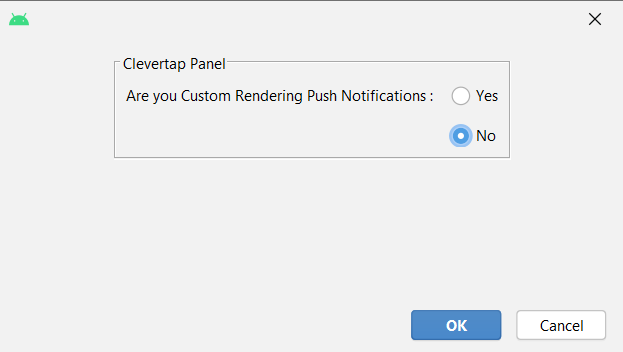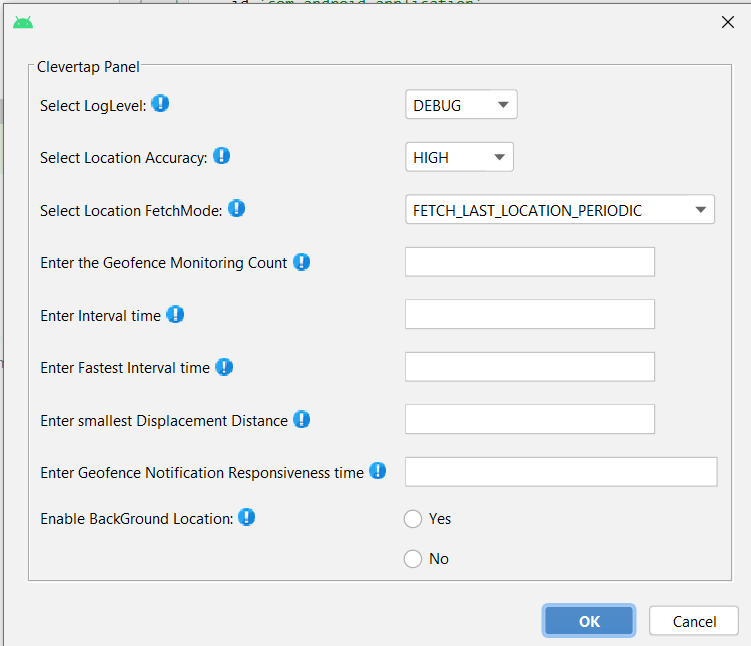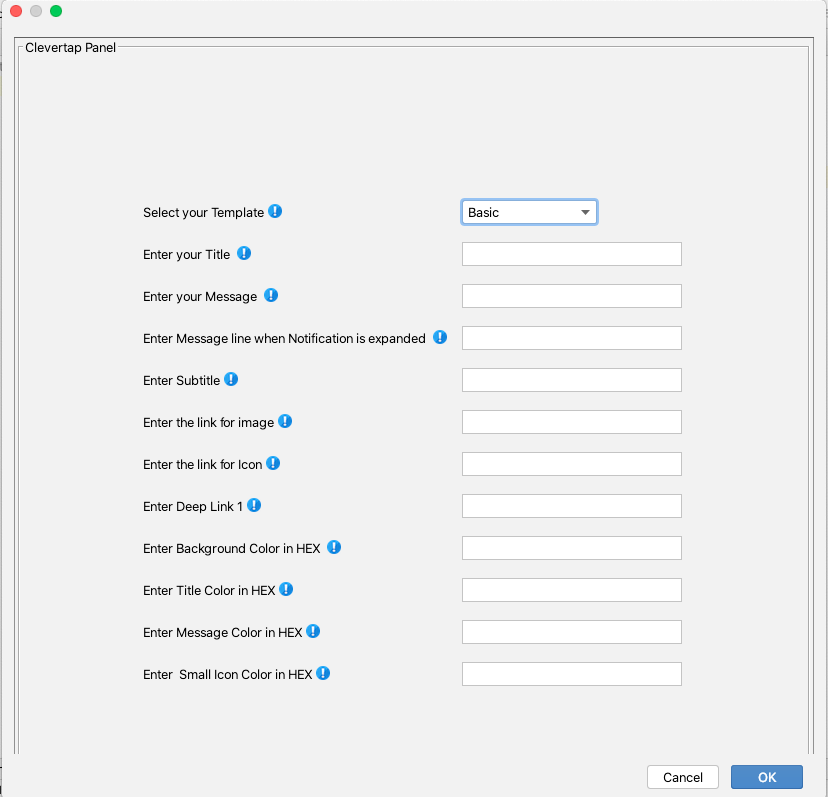<receiver
android:name="com.clevertap.android.sdk.pushnotification.CTPushNotificationReceiver"
android:exported="false"
android:enabled="true">
</receiver>
import android.app.NotificationManager;
CleverTapAPI.createNotificationChannel(getApplicationContext(),"YourChannelId","Your Channel Name","Your Channel Description",NotificationManager.IMPORTANCE_MAX,true);
import android.app.NotificationManager
CleverTapAPI.createNotificationChannel(getApplicationContext(),"YourChannelId","Your Channel Name","Your Channel Description",NotificationManager.IMPORTANCE_MAX,true);
public class MyFcmMessageListenerService extends FirebaseMessagingService {
@Override
public void onMessageReceived(RemoteMessage message){
try {
if (message.getData().size() > 0) {
Bundle extras = new Bundle();
for (Map.Entry<String, String> entry : message.getData().entrySet()) {
extras.putString(entry.getKey(), entry.getValue());
}
NotificationInfo info = CleverTapAPI.getNotificationInfo(extras);
if (info.fromCleverTap) {
CleverTapAPI.createNotification(getApplicationContext(), extras);
} else {
// not from CleverTap handle yourself or pass to another provider
}
}
} catch (Throwable t) {
Log.d("MYFCMLIST", "Error parsing FCM message", t);
}
}
@Override
Public void onNewToken(@NonNull String s)
{
super.onNewToken(s);
cleverTapDefaultInstance=CleverTapAPI.getDefaultInstance(getApplicationContext());
cleverTapDefaultInstance.pushFcmRegistrationId(s,true);
}
}
class MyFcmMessageListenerService : FirebaseMessagingService() {
override fun onMessageReceived(message: RemoteMessage) {
message.data.apply {
try {
if (size > 0) {
val extras = Bundle()
for ((key, value) in this) {
extras.putString(key, value)
}
val info = CleverTapAPI.getNotificationInfo(extras)
if (info.fromCleverTap) {
CleverTapAPI.createNotification(applicationContext, extras)
} else {
// not from CleverTap handle yourself or pass to another provider
}
}
} catch (t: Throwable) {
Log.d("MYFCMLIST", "Error parsing FCM message", t)
}
}
}
}
<receiver
android:name="com.clevertap.android.sdk.pushnotification.CTPushNotificationReceiver"
android:exported="false"
android:enabled="true">
</receiver>
<service
android:name=".fcm.FcmMessageListenerService">
<intent-filter>
<action android:name="com.google.firebase.MESSAGING_EVENT"/>
</intent-filter>
</service>
<meta-data
android:name="FCM_SENDER_ID"
android:value="id:(insert your value)"/>
dependencies {
implementation 'com.google.firebase:firebase-messaging:20.2.4'
implementation 'androidx.core:core:1.3.0'
//Mandatory for CleverTap Android SDK v3.6.4 and above add the following -
implementation 'com.android.installreferrer:installreferrer:2.1'
}
// at the end of the build.gradle file
apply plugin: 'com.google.gms.google-services'
Classpath ‘com.google.gms:google-services:4.3.3’
CleverTapAPI.createNotificationChannel(getApplicationContext(),"YourChannelId","Your Channel Name","Your Channel Description",NotificationManager.IMPORTANCE_MAX,true);
CleverTapAPI.createNotificationChannel(getApplicationContext(),"YourChannelId","Your Channel Name","Your Channel Description",NotificationManager.IMPORTANCE_MAX,true);

